Avernum: Escape from the Pit isn’t one of those new-fangled RPGs. It has a weighty lineage dating back to 1995, and although I was oblivious to this when I started playing, it makes perfect sense. There’s something very 1990s about Avernum, though that’s not a criticism. This newest game, Avernum: Escape from the Pit is a remake of a 1999 game, titled simply Avernum, which was itself a remake of 1995’s Exile: Escape from the Pit. The lineage isn’t purely one of retooling the same property, though. The Avernum series runs up to number six, so there’s a hefty pedigree throwing its weight behind this reworking.
 The premise is that four innocents are arrested for unspecified crimes against a corrupt empire and sentenced to live out the rest of their days in a buried cave system known as Avernum. No one knows what is in Avernum, only that it’s where the empire dumps its malcontents, and no one who is sent there ever returns.
The premise is that four innocents are arrested for unspecified crimes against a corrupt empire and sentenced to live out the rest of their days in a buried cave system known as Avernum. No one knows what is in Avernum, only that it’s where the empire dumps its malcontents, and no one who is sent there ever returns.
These four persecuted citizens form your party of reluctant adventurers. There’s no backstory to any of them, aside from initial allusions to the sort of contrived ‘crimes’ that tend to get people sent to Avernum – primarily annoying an imperial official or expressing a dissenting opinion. As in many older computer RPGs, your characters are irrelevant. They are tools for having an adventure rather than people with personalities and motivations. This could be a good or bad feature, depending on your preferences. Those who like pen and paper RPGs, or who play through even thoroughly plotted RPGs making decisions ‘in character’ might appreciate the blank slates here. Your characters are completely defined by you, from the crime they were convicted of to the way they feel about being in Avernum. On the other hand, all of this is in your head, so if you like your games to give you character development and engaging interaction, Avernum can seem a little flat. Personally I found it a little nostalgic – a throwback to the days when I used to imagine what Link was thinking as he trudged around the NES representation of the Lost Woods.
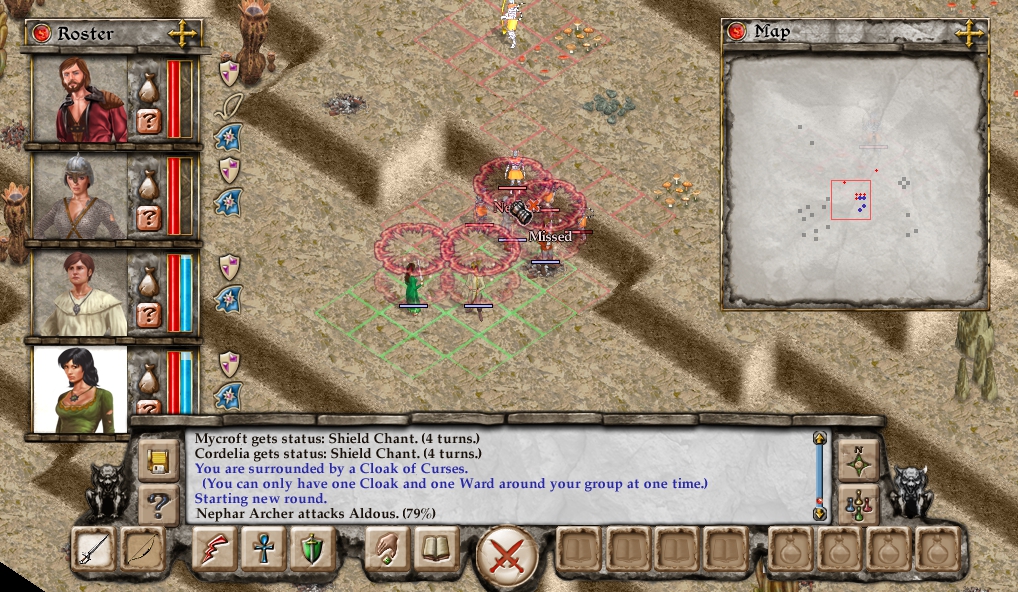 To its credit, while Avernum plays in a way that initially seems daunting and dense, it’s actually quite simple and accessible. A somewhat clunky interface requires you to periodically open your inventory to see if anything useful is on the ground nearby, but otherwise control is quite simple. You guide your party around as a unit with mouse clicks, but if they catch sight of an enemy (or have a random enemy encounter in the outdoor/world map area) the game switches to battle mode. This battle mode is more or less turn-based and superimposes grid lines on the area to denote the nature of motion in combat. You move each character individually until they have expended their allotment of action points for that turn. Moving across the battle grid, performing attacks, casting spells and fiddling with the inventory all use up action points, so choose your actions carefully. Any enemies will do the same when they get the chance. Thanks to some nasty enemy skills and a tendency to come at you en masse, the combat can be surprisingly difficult, with even routine enemies presenting a credible threat. When you come upon ‘boss’ characters – typically the target of a quest or similar – you really have to pay attention and use all your skills and items wisely. I found the sudden halt of my progress frustrating on more than one occasion, but in the end I always managed to triumph by experimenting with my approach.
To its credit, while Avernum plays in a way that initially seems daunting and dense, it’s actually quite simple and accessible. A somewhat clunky interface requires you to periodically open your inventory to see if anything useful is on the ground nearby, but otherwise control is quite simple. You guide your party around as a unit with mouse clicks, but if they catch sight of an enemy (or have a random enemy encounter in the outdoor/world map area) the game switches to battle mode. This battle mode is more or less turn-based and superimposes grid lines on the area to denote the nature of motion in combat. You move each character individually until they have expended their allotment of action points for that turn. Moving across the battle grid, performing attacks, casting spells and fiddling with the inventory all use up action points, so choose your actions carefully. Any enemies will do the same when they get the chance. Thanks to some nasty enemy skills and a tendency to come at you en masse, the combat can be surprisingly difficult, with even routine enemies presenting a credible threat. When you come upon ‘boss’ characters – typically the target of a quest or similar – you really have to pay attention and use all your skills and items wisely. I found the sudden halt of my progress frustrating on more than one occasion, but in the end I always managed to triumph by experimenting with my approach.
While there is a main quest revolving around your reluctance to be in Avernum, more of your time will be spent on side-quests collected from a job board or needy citizens milling around the towns. This whole arrangement had a slightly Morrowind feel to me; the combination of a fungus-based economy and a pretty open world with side-quests aplenty wherever you roam definitely put me in mind of the time I spent in Vvardenfell. The games are otherwise very different though, and Avernum’s setting, while interesting enough, never really comes alive.
 From time to time you’ll get the chance to enhance your party’s skills and attributes. It seldom feels like it makes a noticeable difference, and the purposes of some skills are very unclear for a while, but the chance to emphasise your preferred aspects of a character is always welcome. Whilst it’s perfectly adequate, it’s quite a vanilla upgrade system, and certainly nothing you won’t have seen before if you’ve served your time with RPGs. This sense of ‘fine but forgettable’ carries over into the rest of the game.
From time to time you’ll get the chance to enhance your party’s skills and attributes. It seldom feels like it makes a noticeable difference, and the purposes of some skills are very unclear for a while, but the chance to emphasise your preferred aspects of a character is always welcome. Whilst it’s perfectly adequate, it’s quite a vanilla upgrade system, and certainly nothing you won’t have seen before if you’ve served your time with RPGs. This sense of ‘fine but forgettable’ carries over into the rest of the game.
The gameplay is solid but unremarkable and the same can be said of everything else. The setting is better than the usual generic warring kingdoms or similar, but it doesn’t stray too far from the equally common rebels/evil empire template. Fortunately most of your time will be spent sparing no thought at all for the tyranny that damned you to this hell. Well, in theory it’s a hell; in practice, Avernum itself never lives up to the hype. The in-game text, both dialogue and miscellaneous snippets of narrative, describe the enormous gloomy cavern that comprises Avernum’s world map, the crumbling forts illuminated by the dim glow of fungus, and the eerie echoes of distant nightmare monsters scuttling in the dark. The visuals, though, look like a grey and brown landscape dotted with generic small towns. It’s one thing to require the player to mentally insert their own character arc, but quite another to present them with an clearly depicted environment and ask them to imagine that it’s something else. It’s never a serious problem, but it’s a little jarring to keep seeing perfectly healthy-looking people who are described with a pallid complexion and downcast demeanour, or to read references to the oppressive subterranean gloom while standing amidst miles of what appears to be well lit, if scrubby, moorland.
The game’s text is easily the source of most of the flavour and characterisation. Some RPG players level criticism at any game that doesn’t use voice actors, but personally I favour text over a badly acted voice with an accent that sounds foreign to me. Avernum does go a little above and beyond the call of text, however. In plot-central areas or at the culmination of side-quests it’s not unusual to keep being stopped for lengthy paragraphs describing an event or just a sensory experience. There’s an old maxim among writers that it’s best to show rather than tell, and it’s a lesson that Spiderweb Software should take to heart. These passages are adequately written and the setting of the underground realm is engaging enough to make for reasonably enjoyable reading, but at times Avernum begins to feel more like an interrupted book than a game. Make no mistake, these text boxes are the exception rather than the norm, but when they occur they do feel like an interruption and actually thwart immersion rather than encouraging it. When I’ve spent two hours gradually feeling engaged with the grey and brown wilderness of Avernum, it’s awkward to suddenly have a much richer picture painted for my imagination, and then find myself dropped unceremoniously back into the grey and brown again. Perhaps Avernum could follow the Elder Scrolls’ lead here, and make its revelations about the setting through optional text in the form of books or other in-universe features, rather than just wallpapering half a novel across the screen when the player walks along a particular corridor.
It might sound like I didn’t get much pleasure from Avernum: Escape from the Pit, but that’s not the case at all. I’ve enjoyed my time with it, and found that it grows into a more involving adventure with time. If I were to summarise it in one word, though, that word would be ‘dry’. I was drawn into the game because I had made a decision to play it and nothing discouraged me enough to stop. If I had just seen it in passing or heard its name and decided to give it a try, though, I think the experience would be an unappealing one. From the grim grey-brown graphics and samey town design to the walls of text and blank slate characters, Avernum is a type of role playing game that will be very appealing to a certain type of audience, and about as enticing as dry toast and gruel to everyone else. Personally I found its somewhat tactical combat, faintly Morrowindian tone and steady stream of optional side-quests engrossing enough to press on with. Maybe that’s enough. Maybe Avernum doesn’t need to appeal to anyone beyond dyed-in-the-wool veteran roleplayers. If you’re curious and want to give it a try, be forewarned that it might need a conscious decision to persist. If you do persist, you might find the challenge and freedom of wandering the caverns of Avernum quite enjoyable in spite of all its efforts to the contrary.
Overall Rating: 




Avernum: Escape from the Pit is available in full or as a demo on Steam and through Spiderweb Software’s website. A copy of the game was provided for review by the developer.
© 2012 – 2013, The Indie Mine. All rights reserved.

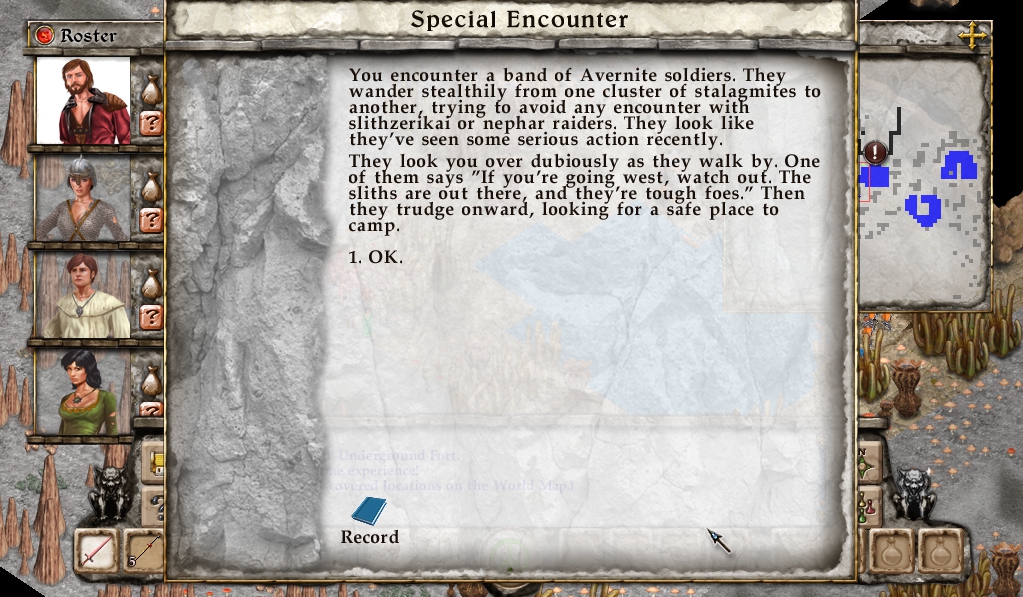
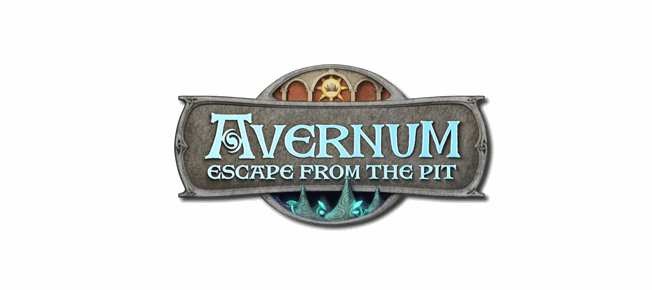
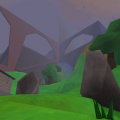
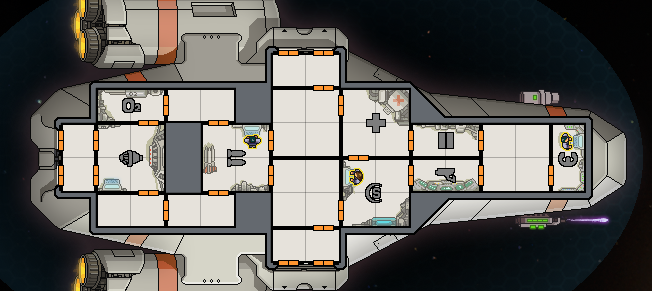
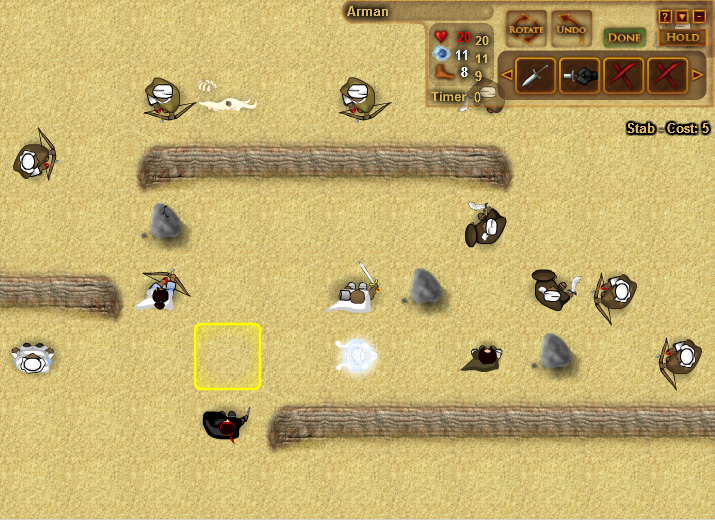
I’ve played through the game a couple of weeks ago. It’s actually a remake of a remake.
Spiderweb used to make the Exile series (the name which I preferred to Avernum). Then they made the Nethergate game as well as the Geneforge series. They remade the Exile series in this new, slightly modified engine and Avernum was born. To the originally remade series, they added 3 more sequels, Avernum 4-6.
After that, they made Avadon, in a brand new engine. Now, they’ve remade the original Avernum, which is the remake of the original Exila, in this new Avadon engine. The game got more streamlined through the remakes, and a bit less magical, in my opinion, but it’s still some of the best the indie scene has to offer in the area of old school PC role playing games.
Here are my articles on Avernum and Avadon:
http://addictedgamewise.blogspot.com/search/label/avadon
http://addictedgamewise.blogspot.com/search/label/avernum
Indeed. I believe I cover that in the first paragraph…
In summerization, if u like rougelikes u’ll like this game, it’s also only 10 dollars last I checked and very easily worth it
I’m not sure it would necessarily fit with roguelike tastes. It doesn’t have the loot trawling, randomisation or insane difficulty of a roguelike. It’s more like a cross between old 16-bit RPGs and Morrowind.